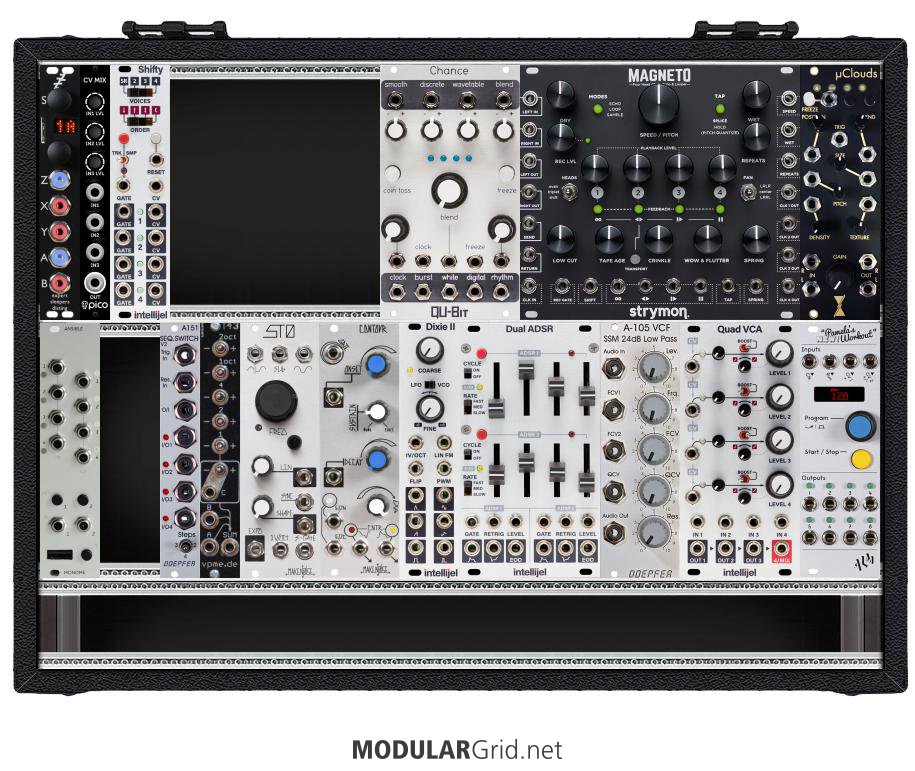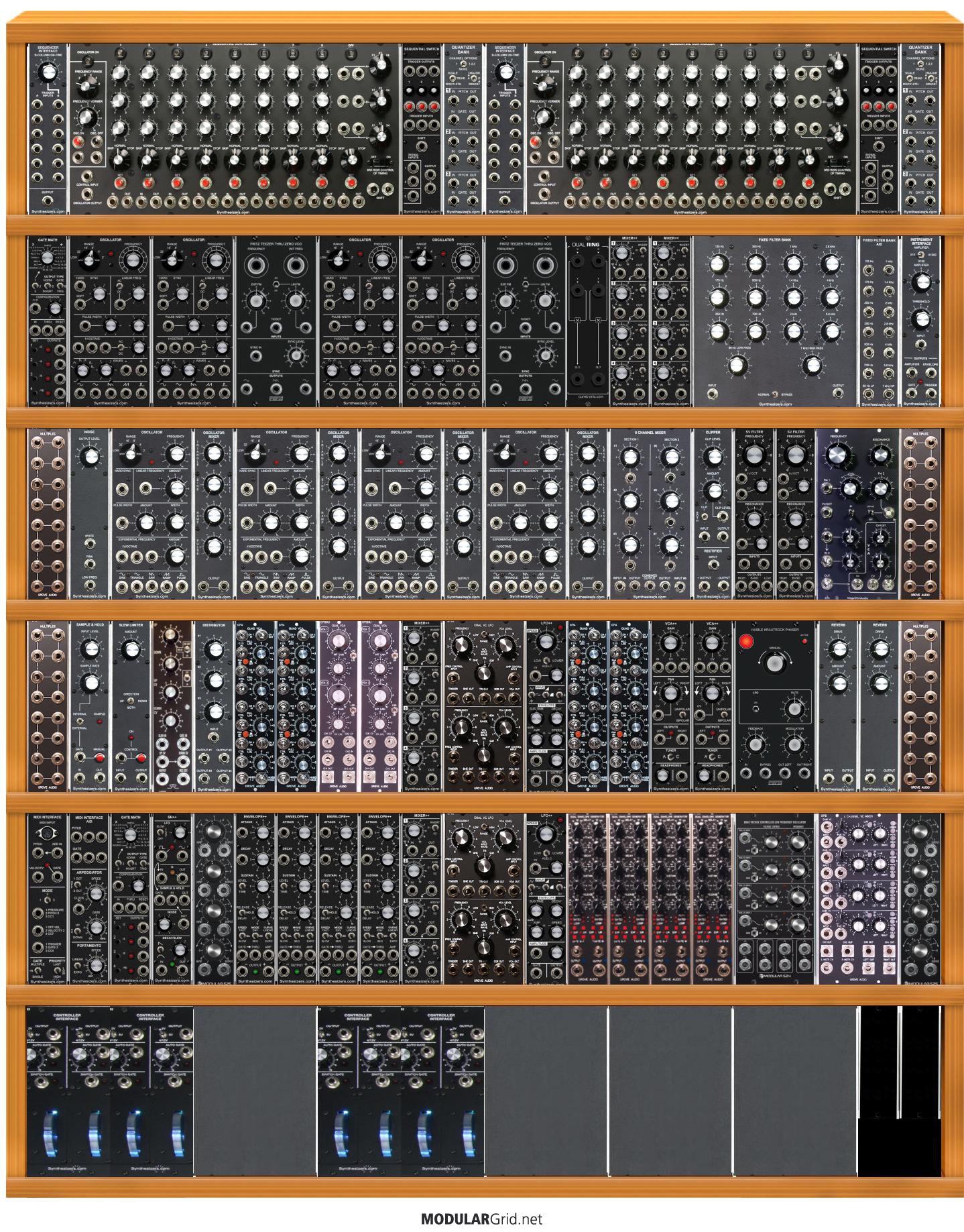Yeah, that thing was a bitch to patch; the dope sheet for the patch for the ARP 2600 and Digisound tandemmed was 2 1/2 pages long. How it worked, though, was brilliant: the piece depended on a continuum of non-repeating, dynamically-shifting voltage curves that then got fed back out in all directions, with differing polarities and phases. Key to it was two things:
1) Eight attenuverters on the Digisound. These were the 'steering' controls. All of the various modulation signals fed into these and they functioned as a sort of 'network', in which incremental, small changes would knock the whole system out of, and back into, equilibrium. But that process had a lot of 'lag' built into it, so a change of one pot would perhaps take 10-20 seconds to make the resulting change sonically. That, plus the point that the modular system was fed into a long processor cascade, made any change done manually take a LONG time to finally reach a new stable state.
2) A shortwave receiver fed into three different audio frequency bands. This is the 'not under control' part. I used a fairly broad bandpass filter to rein in the sonics, and this was fed into the audio of the modular system at a very low level. Then out of that, two other 1/10th octave passband filters took 'slices' of that audio spectra and these were sent to the envelope followers on the ARP and Digisound, where their levels were converted into CVs and fed into the modulation 'network'. Since shortwave signals constantly fluctuate in phase, level, etc, there was no controlling what any of this would do at all. And, of course, it too is constantly dis-aligning the modulation curves.
The only other things on the track are an MS-20, which stays constant to provide a 'pivot sound' around which the rest of the sonic architecture moves, and a theremin which appears at points. When that happens, also, the keyboard controller gets used to 'dive' the modular's general pitch downward to 'window' the theremin solos. As for how I got the theremin to 'feed back' at that one solo's end...well, some things must remain a secret, heh, heh, heh...




